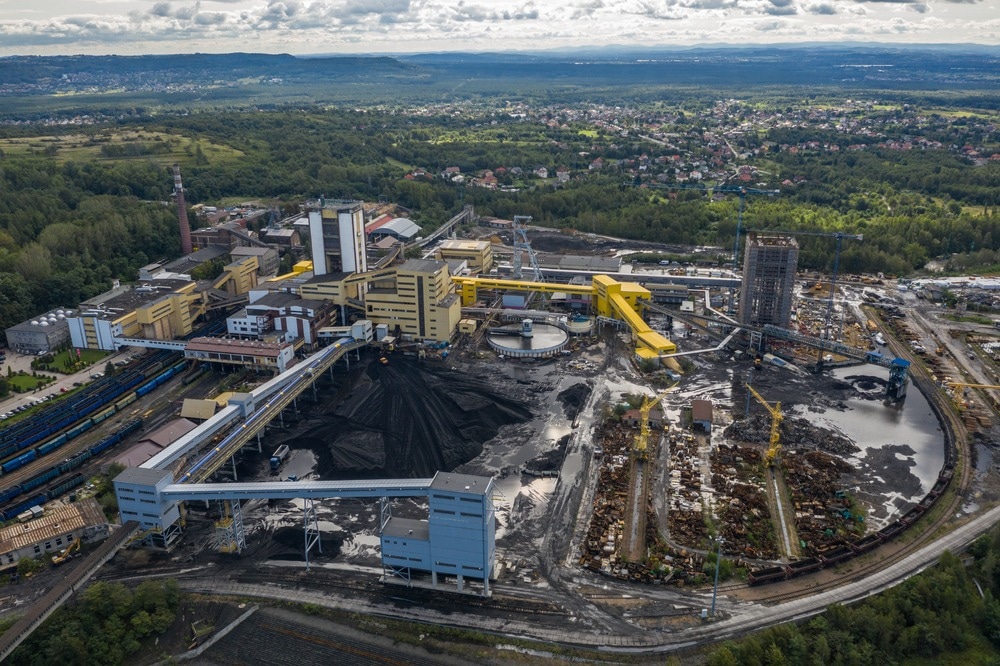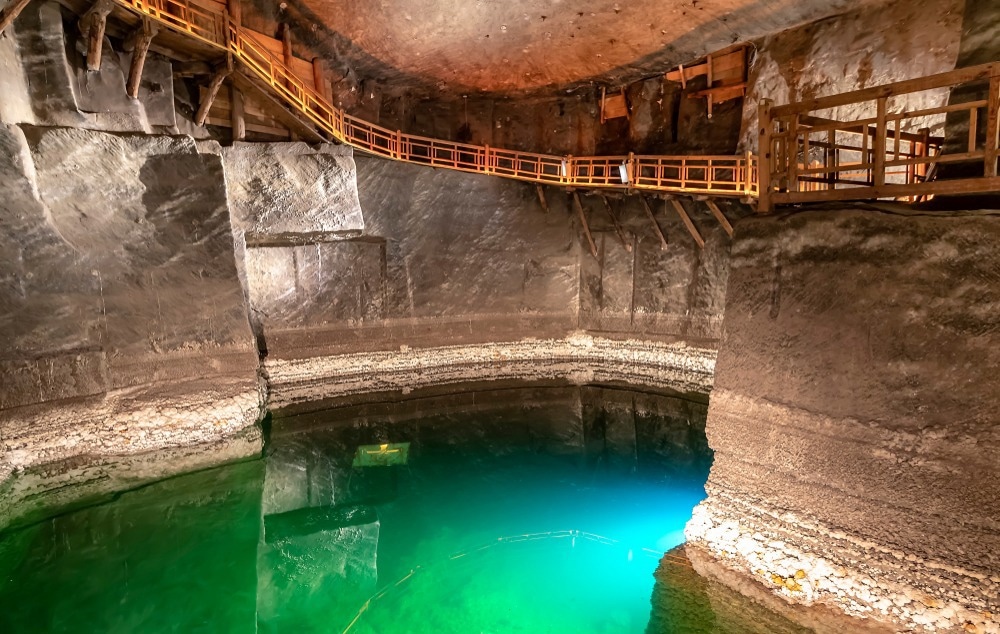Mining has been a key economic activity in Poland for centuries. Today, the mining industry is a key pillar of Poland’s economy, having played a crucial role in this Central European nation’s cultural heritage.
Poland has a mostly temperate climate and abundant natural mineral and fuel resources, including deposits of natural gas, coal, silver, and copper. This article will provide an overview of Poland's mining, minerals, and fuel resources.

Coal mine in Poland. Image Credit: Chawranphoto/Shutterstock.com
Poland is a country located in Central Europe. With a total area of 312,685 km2 and a population of 38,746,310 as of 2024 estimates, Poland has seen significant economic growth since joining the European Union in 2004. The country’s GDP was estimated to be $1.628 trillion in 2023.1
The Economic Significance of Mining in Poland
Poland has salt mines that have operated since at least the 13th century, with the Wieliczka and Bochnia Salt Mines stretching for hundreds of kilometers underground.

Underground lake in Polish salt mine. Image Credit: agsaz/Shutterstock.com
The Silesian Industrial Region is a global coal mining powerhouse, with coal mines dotting the area. Lower Silesia has an extensive copper belt, with vast deposits of this metal crucial to the country’s economic development over the centuries. Today, sophisticated and innovative extraction and processing technologies are utilized in the country’s mining sector.2
According to some estimates, the Polish mining and minerals industry had a market value of $36.2 billion in 2022, and the sector experienced an 11.1% CAGR in 2017-2022. In the same year, Polish mining accounted for around a 7% share of all output in the European Union.3
Overview of Fuel Resources in Mining
Fossil fuels are still the primary source of energy in Poland, representing 78.4% of total installed capacity as of 2022, with renewables such as wind, solar, and hydropower accounting for the remaining capacity.1
The country produced 118.682 metric tons of coal in 2022, with proven reserves of 28.531 billion metric tons.
Want to save this article for later? Click here.
Crude oil reserves in 2021 stood at 113 million barrels. Natural gas reserves were estimated at 91.492 billion cubic meters in 2021.1 Poland is a net importer of energy resources.
Minerals and Metals in Poland
According to a 2019 study by the US Geological Survey, Poland was the world’s fifth-ranked producer of silver, third-ranked rhenium producer, and seventh-ranked producer of selenium.
Other mineral commodities produced in Poland included industrial gravel, industrial sand, sulfur, ammonia, and lime. The country was the third-ranked producer of lignite and refined copper.4
Quartz and quartz crystal saw a 64% increase in production in Poland in 2019, with lead production increasing by 52%. Pig iron and bentonite, in contrast, only saw an 11% increase in 2019.4
Mining and Minerals Companies in Poland
The majority of mining companies in Poland are privately owned, with the Polish government owning only a small number of companies in the mining and minerals sector. The Polish government owns shares in companies such as KGHM, PGNiG, and PKN Orlen S.A.4
KGHM, for instance, was the only copper producer in Poland according to the USGS’s 2019 report. 29.9 million metric tons of copper was mined by KGHM in that year. 2019 saw the installation of new copper concentrate roasting capabilities at the company’s Glogow plant.4
ArcoMittal Poland lowered iron production capacity at its blast furnaces, closing its Krakow blast furnace entirely in November 2019 due to decreasing EU demand for iron and steel. KGHM was the only Polish producer of rhenium.4
In 2024, KGHM reported copper production of 544,000 metric tons, an increase of 3% compared to 2023. The company experienced strong production and revenue growth in 2024. Currently, the company focuses on sustainable development, operational profitability, emissions and pollution reduction, and efficiency across its operations.5
Government Mining Policies in Poland
Polish mining activities are regulated by the nation’s laws. The primary law that regulates these economic activities is the Geological and Mining Law (GML.) This law came into force in 2012 and covers the terms and conditions of all mining activity within the country, such as mineral development, mining activities, subterranean waste storage, and protection of mineral deposits.4
The Polish government protects certain mineral deposits, and amendments to the GML came into force in 2015, covering areas such as concession awarding processes. EU provisions concerned with improving safety in offshore gas and oil extraction were also included in subsequent amendments to Polish mining and mineral extraction laws.4
The Future of Mining in Poland
Poland is a fast-growing EU economy with a long history of mining. The country has deposits of coal, natural gas, and economically important minerals such as copper, rhenium, sulfur, and salt. Companies such as KGHM have reported strong revenue and production growth and are focusing on sustainable development, operational efficiency, and productivity.
The Polish mining and minerals industry continues to perform strongly, but it must comply with government regulations and attract investment to maintain this growth over the coming decades.
Challenges associated with an evolving mining industry and the legacy of Soviet occupation are proving persistent for the sector in this Central European economy.
References and Further Reading
- CIA World Factbook (2025) Poland [online] cia.gov. Available at: https://www.cia.gov/the-world-factbook/countries/poland/ (Accessed on 08 March 2025)
- Polska Kultura (2024) Beneath the Surface: Rich History of Polish Mines [online] Available at: https://polskakultura.com/beneath-the-surface-rich-history-of-polish-mines/ (Accessed on 08 March 2025)
- Research and Markets (2023) Poland Metals and Minerals Market Summary and Forecast [online] Available at: https://www.researchandmarkets.com/reports/5935070/poland-metals-mining-market-summary-forecast (Accessed on 08 March 2025)
- US Geological Survey (2019) 2019 Minerals Yearbook – Poland [online, PDF] pubs.usgs.gov. Available at: https://pubs.usgs.gov/myb/vol3/2019/myb3-2019-poland.pdf (Accessed on 08 March 2025)
- KGHM (2025) Results Highlights [online] kghm.com. Available at: https://kghm.com/en/investors/results-center (Accessed on 08 March 2025)
Disclaimer: The views expressed here are those of the author expressed in their private capacity and do not necessarily represent the views of AZoM.com Limited T/A AZoNetwork the owner and operator of this website. This disclaimer forms part of the Terms and conditions of use of this website.